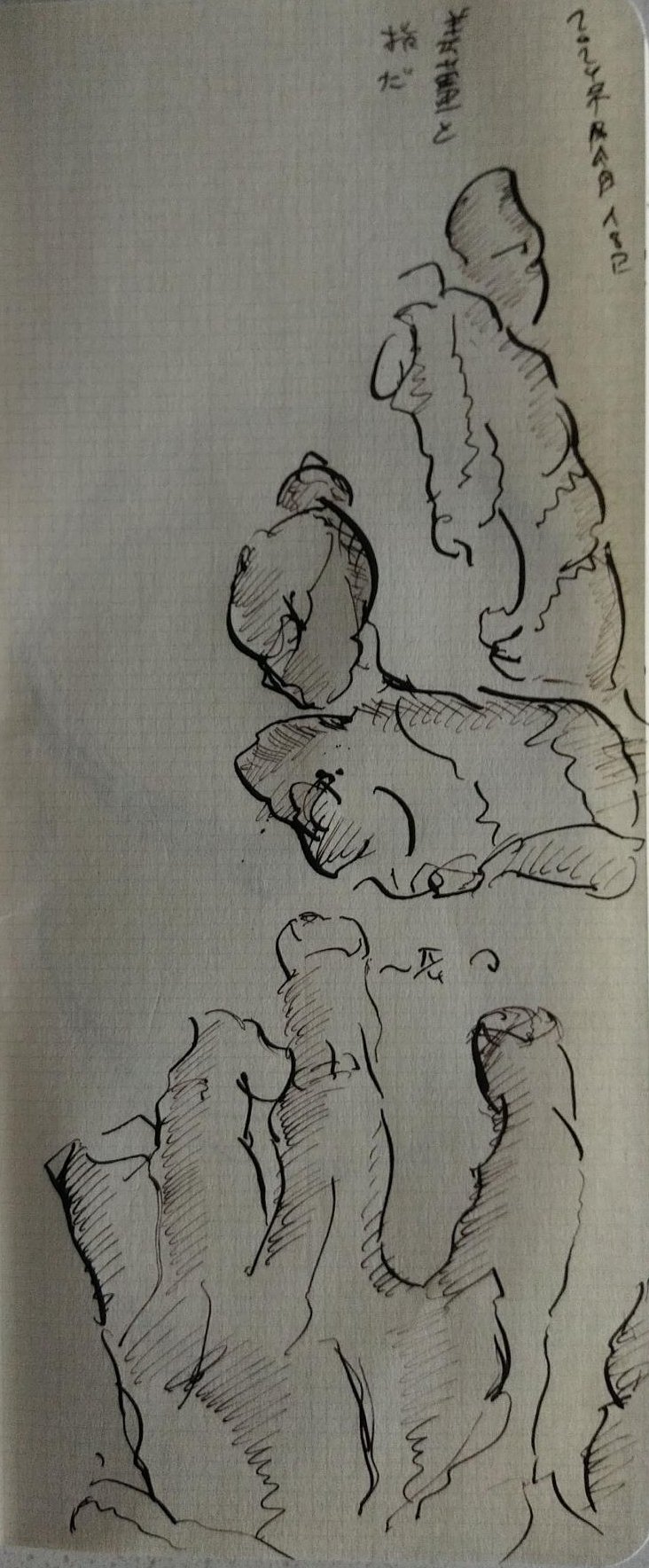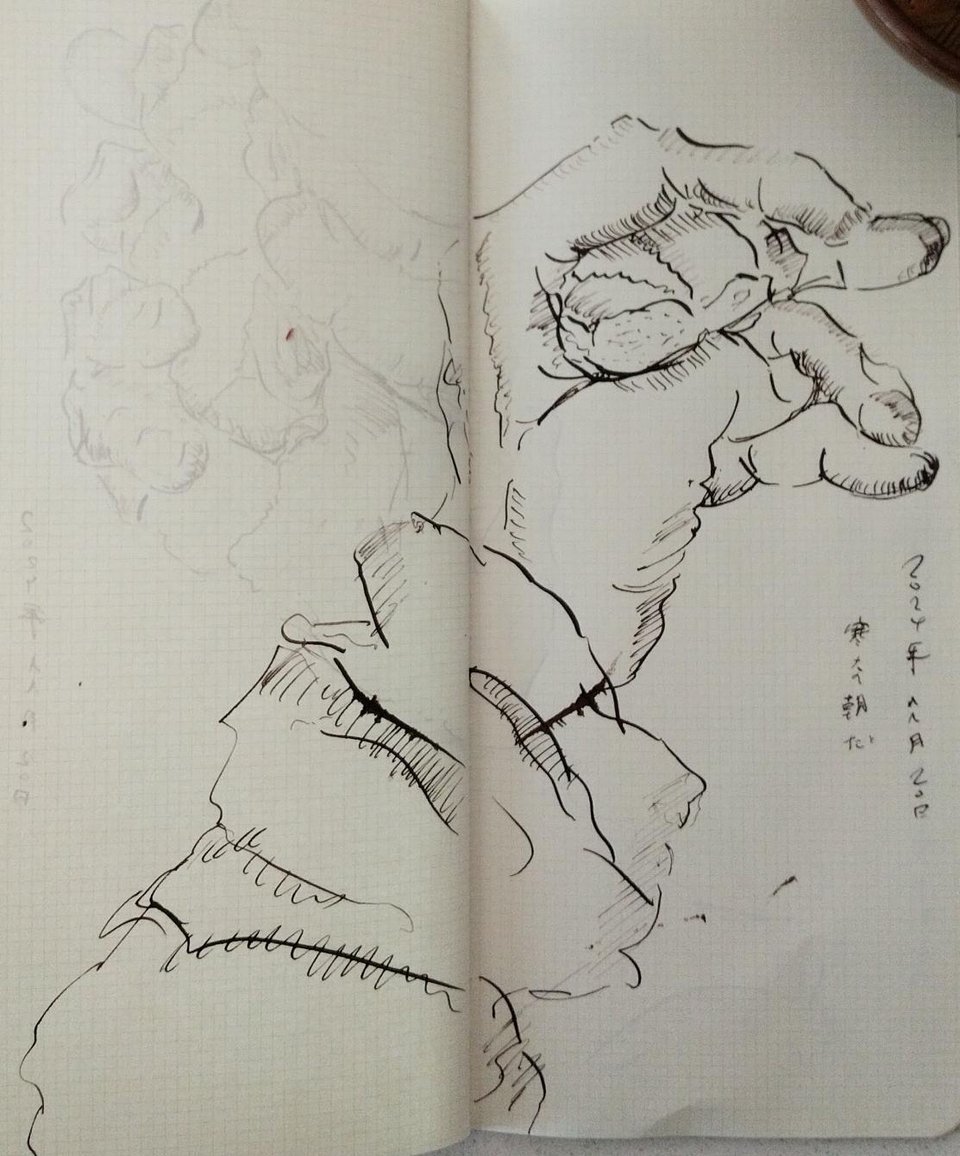I have not forgotten — I simply had a couple early calls this morning, and that, in combination with a somewhat discombobulated week, has led to this edition’s going out a bit later than I’d prefer.
I beg your forgiveness for the businesslike quality of what follows — entering the twelfth hour of wakefulness, I feel my wit flagging.
This week, casting about for new themes, I rediscovered hands.

Or at least, hand, as it’s exclusively the left, the non-drawing hand, that figures in this series. Some days I seemed to know what I was doing, others not, and I seem not yet to have much control over modeling — the character of the modeling, be it brusque or refined, varies day by day, and I’m at a loss thus far how to channel it one way or another. I can say that the days when the modeling is rougher correspond to greater confidence in my skill.


Which is not to say confidence corresponds with skill … the covariance there is positive but weakly so.

This morning, harried and delayed in getting to the flex nib, everything came out markedly wobbly.


But oh well. If I included only those things I thought were good I’d be doing you a disservice. That’s a bag of tea I’m gripping in the last two, incidentally — a really lovely and inexpensive 2007 heicha from Bitterleaf.
A note on the shirt cuff in the penultimate image. This is a Ues WR60 honeycomb thermal, made from preconsumer recovered cotton, and I cannot recommend them highly enough. Alas, they seem no longer to be making them. Instead they’ve got a heavier version with a waffle weave, also nice but perhaps less versatile (are they trying to compete with Iron Heart? Part of what I liked about the old Ues version was that it did not try that for that butch Iron Heart vibe. But now I’m sounding like the cranky old guy telling you how everything was better in the past).
Here’s the continuation of Patina. You’ll observe I’ve dispensed with the section numbering, in anticipation of the day when I’ll sell this as a book-shaped thing and want to assure editors I can muster the minimal conformance with convention necessary to get the project past the marketing people.
N.b., neither Bitterleaf Teas nor Ues nor Withered Fig have provided a consideration, I just like sharing.
For the love of all that is good, share this and encourage people to smash the proverbial subscribe.
(previously)
… it’s possible I’ve projected the qualifier pencil-like on some other sensation than what most people have in mind when they refer to the pencil-like feedback of a Sailor fountain pen.)
(ok, here’s the new part)
Nonetheless, this bridge to more familiar experiences and corresponds, in my mind, to [phrase] feel like productive paths to pursue. For consider how sriracha might become meaningful for me even had I never tasted sriracha. I might infer from context—reading, listening to someone describe a recipe—that sriracha referred to some kind of fermented-chile paste and rough in its taste, including the chemesthetic and tactile dimensions, by analogy from fermented-chile preparations with which I’m familiar. Or I might consult the ingredients list printed on the bottle: Chili, Sugar, Salt, Garlic, Distilled Vinegar, Potassium Sorbate and Sodium Bisulfite as preservatives, and Xanthan Gum. In this way, by borrowing from neighboring forms of experience, I can imbue sriracha with meaning even in the absence of encounters with sriracha. Meaning, you might say, is the aboutness of imbuing.
But note two things. First, at some point in the course of imbuing sriracha with meaning, I must have recourse to a history of encounters with the world. I need not draw all the properties I end up assigning to sriracha (and ascribing to sriracha) from the same place: perhaps the sweetness and acid I pull from brown rice vinegar, the mouthfeel from ketchup, the chemesthetic burn of chile and garlic from Tabasco. I recombine the memory of these sensations to fashion a stand-in for sriracha. A lot of meaning unfolds this way, by chains of association across a network of prior meanings. But at some point, these chains of association must resolve to a history of encounters with the world.
Must is a strong word, and indeed, I suspect that, more often than we’d like to admit, we provisionally imbue signs with meaning on the basis of chains of association that end up being circular, that never resolve to encounters with the world, to put it crudely, of things.
But—second—this is a shallow form of meaning. As with the pencil-like feedback of a Sailor fountain pen, sriracha becomes more meaningful—acquires depth—when I’ve actually tasted sriracha. And the stronger the current of my history of encounters with sriracha, the more depth sriracha acquires.
No doubt we reach a point where it no longer makes sense to say that a sign acquires depth with every encounter with its referent. In fact, a sign might lose depth with overexposure—this is the phenomenon we call habituation. If I doused everything I ate in sriracha, sriracha, and with it sriracha, would lose its distinctiveness, its capacity, respectively, to evoke or delimit a particular quality of experience.
You just read issue #42 of Stuff. You can also browse the full archives of this newsletter.
